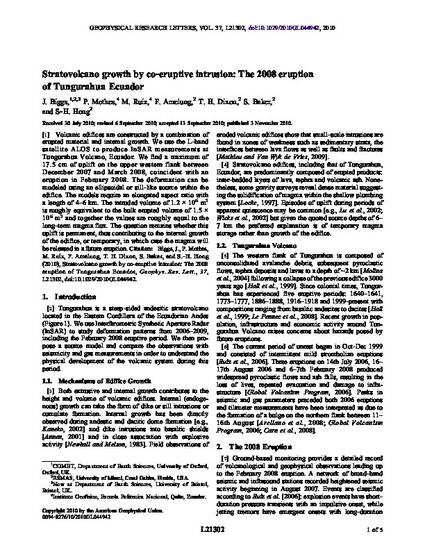
- volcano deformation
Volcanic edifices are constructed by a combination of erupted material and internal growth. We use the L-band satellite ALOS to produce InSAR measurements at Tungurahua Volcano, Ecuador. We find a maximum of 17.5 cm of uplift on the upper western flank between December 2007 and March 2008, coincident with an eruption in February 2008. The deformation can be modeled using an ellipsoidal or sill-like source within the edifice. The models require an elongated aspect ratio with a length of 4–6 km. The intruded volume of 1.2 × 106 m3 is roughly equivalent to the bulk erupted volume of 1.5 × 106 m3 and together the values are roughly equal to the long-term magma flux. The question remains whether this uplift is permanent, thus contributing to the internal growth of the edifice, or temporary, in which case the magma will be released in a future eruption.
Geophysical Research Letters, v. 37, issue 21, art. L21302
Copyright 2010 by the American Geophysical Union.
Available at: http://works.bepress.com/timothydixon/146/
